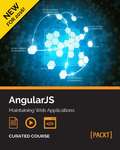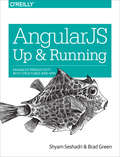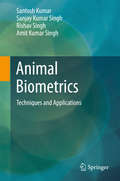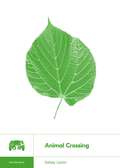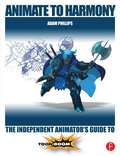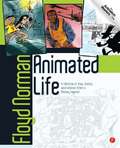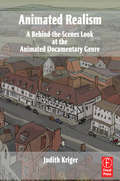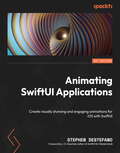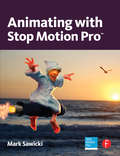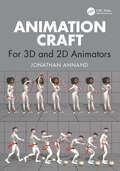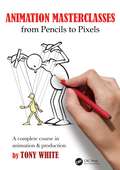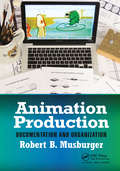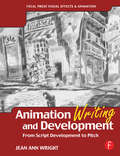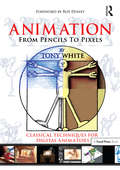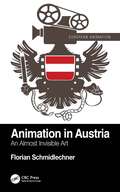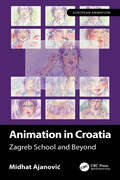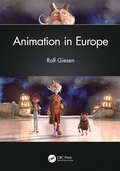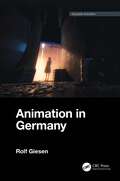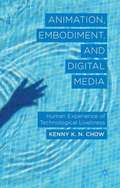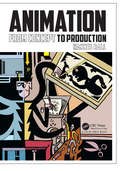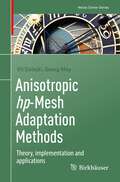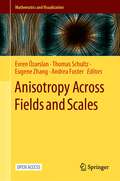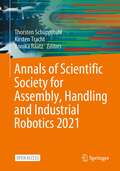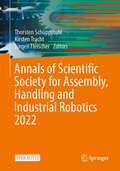- Table View
- List View
AngularJS: Maintaining Web Applications
by Rodrigo Branas Amos Q. Haviv Matt Frisbie ChandermaniGet started with speed building AngularJS applications, and scale up to a full-stack web application, using the existing AngularJS framework without the trouble of migrating to Angular 2 About This Book • Follow the best practices of the framework to organize and modularize your application • Get to grips with Angular's Model-View-Controller architecture • Create application modules with maximum reusability and extensibility • Structure and use AngularJS applications in your MEAN project Who This Book Is For This course is for people who want to discover how they can improve their current web applications with the existing version of Angular without having to worry much about migrating to AngularJS 2. What You Will Learn • Install and set up the AngularJS framework • Create your own full-featured and robust AngularJS web apps • Create reusable directives and then extend the behavior of HTML on your web page • Master the most difficult aspects of AngularJS such as animation, testing, and promises • Optimize and maintain your web applications • Create more powerful full-stack web applications, that draw on the combined power of AngularJS, Node.js, MongoDB, and Express in the MEAN stack In Detail The AngularJS course is a journey to help you improve and scale your current web applications with the existing version of Angular without having to worry about migration to Angular 2. The course is divided into four modules. The first part—AngularJS Essentials is like a practical guide, filled with many step-by-step examples that will lead you through the best practices of AngularJS. After a brief introduction, you will learn how to create reusable components with directives. You will then take a look at many data handling techniques, discover a complete set of technologies that are capable to accomplish any challenge related to present, transform, and validate data on the user's interface. Finally, you will discover the best way to deal with the scope and how to break up the application into separate modules, giving rise to reusable and interchangeable libraries. With this you've crossed a milestone and are about to enter the world of learning by example. In the next part—Learning AngularJS By Example, you will learn how to effectively build apps using the AngularJS platform. You will be building multiple apps on this platform ranging from simple ones to more complex ones. In this module, you will roll up your coding sleeves and create a serious AngularJS application by example – a rich featured workout app. Take the coding a step at a time at first, then once you're coding a full app in this module, a lot of AngularJS will fall right into place for you. The third module—AngularJS Web Application Development Cookbook, will get you accustomed to the AngularJS concept armed with a solid understanding of how it works, insight into the best ways to wield it in real-world applications, and annotated code examples. It is a rich library of AngularJS coding solutions that you can use straight away in your own code projects. You can even improve and maintain the workout app you built in the earlier module in this course. You are just a step away from completing this learning path of AngularJS. The name of the next part—MEAN Web Development itself assures that you are nearing the destination. The idea is simple with this part, you'll take MongoDB as the database, Express as the web framework, AngularJS as the frontend framework, and Node.js as the platform, and combine them together in a modular approach that will ensure the flexibility needed in modern software development. This is also your graduation to full-stack web development, which can open many new coding and career opportunities for you! Style and approach Get up to speed building AngularJS applications, then improve and scale full-stack web applications, using the existing AngularJS framework without the trouble of migrating to Angular 2
AngularJS: Up and Running
by Shyam Seshadri Brad GreenIf you want to get started with AngularJS, either as a side project, an additional tool, or for your main work, this practical guide teaches you how to use this meta-framework step-by-step, from the basics to advanced concepts. By the end of the book, you'll understand how to develop a large, maintainable, and performant application with AngularJS.Guided by two engineers who worked on AngularJS at Google, you'll learn the components needed to build data-driven applications, using declarative programming and the Model-view-controller pattern. You'll also learn how to conduct unit tests on each part of your application.Learn how to use controllers for moving data to and from viewsUnderstand when to use AngularJS services instead of controllersCommunicate with the server to store, fetch, and update data asynchronouslyKnow when to use AngularJS filters for converting data and values to different formatsImplement single-page applications, using ngRoute to select views and navigationDive into basic and advanced directives for creating reusable componentsWrite an end-to-end test on a live version of your entire applicationUse best practices, guidelines, and tools throughout the development cycle
Animal Biometrics: Techniques And Applications
by Santosh Kumar Amit Kumar Singh Sanjay Kumar Singh Rishav SinghThis book presents state-of-the-art methodologies and a comprehensive introduction to the recognition and representation of species and individual animals based on their physiological and phenotypic appearances, biometric characteristics, and morphological image patterns. It provides in-depth coverage of this emerging area, with an emphasis on the design and analysis techniques used in visual animal biometrics-based recognition systems. <P><P>The book offers a comprehensive introduction to visual animal biometrics, addressing a range of recent advances and practices like sensing, feature extraction, feature selection and representation, matching, indexing of feature sets, and animal biometrics-based multimodal systems. It provides authoritative information on all the major concepts, as well as highly specific topics, e.g. the identification of cattle based on their muzzle point image pattern and face images to prevent false insurance claims, or the monitoring and registration of animals based on their biometric features. <P>As such, the book provides a sound platform for understanding the Visual Animal Biometrics paradigm, a vital catalyst for researchers in the field, and a valuable guide for professionals. In addition, it can help both private and public organizations adapt and enhance their classical animal recognition systems.
Animal Crossing (Boss Fight Books)
by Kelsey LewinBefore the world of Animal Crossing became a pandemic lifeline for millions, the &“social sim&” communication game D??butsu no Mori, or &“Animal Forest,&” debuted in 2001 on Nintendo 64 in Japan, then once again in 2002 on GameCube to critical and commercial success all over the world. An open-ended casual game ahead of its time, Animal Crossing set the stage for the series&’s many incarnations to come with its focus on building community and friendship, its in-game currency of Bells, and its village of Animalese-speaking friends like Tom Nook, K.K. Slider, and the mean Mr. Resetti. You could visit the villages of your friends and give them gifts—all without being connected to the internet. Video game preservationist and historian Kelsey Lewin tells the story of how a mundane-sounding game full of bug-catching, letter-writing, and furniture-collecting became one of Nintendo&’s best-loved franchises, with Animal Crossing: New Horizons eclipsing Super Mario Bros. for all-time sales in Japan, unlocking gaming&’s massive potential to tap into our desire to plant trees, find friends, and make the world a better place.
Animate to Harmony: The Independent Animator's Guide to Toon Boom
by Adam PhillipsWant to create studio-quality work and get noticed? Just coming off Flash and looking for a Toon Boom intro? Are you a traditional pencil-and-paper animator? From scene setup to the final render, learn how to navigate the Toon Boom interface to create animation that can be published on a variety of platforms and formats. Animate to Harmony guides you through Toon Boom’s Animate, Animate Pro and Harmony programs, teaching you how to create high-quality 2D animation of all complexities. The main text focuses onfeatures that are common across all three programs while "Advanced Techniques" boxes throughout the book elaborate on Pro and Harmony features, appealing to all levels of experience with any of the three main Toon Boom products.
Animated Life: A Lifetime of tips, tricks, techniques and stories from a Disney Legend
by Floyd NormanA well designed, well written animated film has warmth, humor and charm. Since Steamboat Mickey, animators have been creating characters and films that are charming, warm and humorous, allowing people to connect with the animated medium. Animaton fans love the characters for a lifetime. This is the legacy of the countless animators and artists who created the classic characters and fun stories and the legacy of Disney Legend, Floyd Norman. Written with wit and verve, Animated Life is a guided tour through an entire lifetime of techniques, practical hands-on advice and insight into an entire industry. A vital tutorial in animation's past, present and future for students who are now poised to be part of another new generation in the art form. Apply artistic magic to your own projects and garner valuable insight and inspiration from a True Disney legend. With valuable advice, critical comment, and inspiration for every student of the arts, Animated Life is a classic in the making with completely relevant techniques and tools for the contemporary animation or fine arts professional.
Animated Realism: A Behind The Scenes Look at the Animation Tools and Techniques of Award Winning Films
by Judith KrigerWith the development and accessibility of animation tools and techniques, filmmakers are blurring the boundaries between documentary filmmaking and animation. The intimacy, imperfection and charm of the animated form is providing live-action and animation directors with unique ways to tell stories, humanize events and convey information not easily adapted for live-action media. "Animated Realism" presents animation techniques as they apply to the documentary genre with an inspirational behind-the-scenes look at award-winning animated documentaries. Animators and documentary filmmakers alike will learn how to develop a visual style with animation, translate a graphic novel into a documentary and use 3D animation as a storytelling tool, all in the context of creating animated documentaries. With insight and inspiration, "Animated Realism" includes interviews from industry luminaries like John Canemaker, Oscar Winning Director of "The Moon and the Son", Yoni Goodman, Animation Director of Oscar Nominated Waltz with Bashir and Chris Landreth, Oscan Winning creator of Ryan. Packed with beautiful, instructive illustrations and previously unpublished material (including storyboards, photos and hand-drawn sketches) and interspersed with interviews - this is an exceptional source of inspiration and knowledge for animators, students and fans alike. With a companion website featuring animated shorts from leading animated documentaries, animators, students and documentary filmmakers will be able to analyze and apply Oscar-winning animation techniques to their own films. Learn from the best...Judith Kriger interviews some of the most innovative and inspirational animators, including John Canemaker, Oscar Winning Director of "The Moon and the Son", Yoni Goodman, Animation Director of Oscar Nominated Waltz with Bashir and Chris Landreth, Oscan Winning Director of Ryan.
Animating SwiftUI Applications: Create visually stunning and engaging animations for iOS with SwiftUI
by Stephen DeStefano J.D. GauchatUnleash the power of SwiftUI by building dynamic, cross-platform projects that will amaze their usersPurchase of the print or Kindle book includes a free PDF eBookKey FeaturesExplore the basics of declarative programming and animationUnderstand the fundamentals of SwiftUI and animatable propertiesLearn while working on beginner-to-advanced level animation projectsBook DescriptionSwift and SwiftUI are the backbone of Apple application development, making them a crucial skill set to learn. Animating SwiftUI Applications focuses on the creation of stunning animations, making you proficient in this declarative language and employing a minimal code approach.In this book, you'll start by exploring the fundamentals of SwiftUI and animation, before jumping into various projects that will cement these skills in practice. You will explore some simple projects, like animating circles, creating color spectrums with hueRotation, animating individual parts of an image, as well as combining multiple views together to produce dynamic creations. The book will then transition into more advanced animation projects that employ the GeometryReader, which helps align your animations across different devices, as well as creating word and color games. Finally, you will learn how to integrate the SpriteKit framework into our SwiftUI code to create scenes with wind, fire, rain, and or snow scene, along with adding physics, gravity, collisions, and particle emitters to your animations.By the end of this book, you'll have created a number of different animation projects, and will have gained a deep understanding of SwiftUI that can be used for your own creations.What you will learnUnderstand the fundamentals of SwiftUI and declarative programmingMaster animation concepts like state variables and time curvesExplore animation properties like hueRotation, opacity, and scaleCreate animations using physics, gravity, collision, and moreUse the GeometryReader to align views across various platformsCombine different animations for more dynamic effectsAdd audio to your animations for an interactive experienceWho this book is forThis book is for aspiring SwiftUI developers who have a basic understanding of Swift. It can also be used by SwiftUI developers, UIKit developers, and iOS developers that are new to SwiftUI and want to improve their animation proficiency.
Animating with Stop Motion Pro
by Mark SawickiAnimating with Stop Motion Pro is comprehensive, hands-on guide to achieving professional results with Stop Motion Pro 7.0 software. Gone are the days of stop motion guesswork and waiting to see the finalized result of your meticulous, labor intensive animations. With the push of a mouse button and the Stop Motion Pro software, animators have ten times the capability of simple camera stop motion capture. Re-visualize stop motion character movements, graph these movements and composite characters into a flawless animations with the techniques and step by step tutorials featured in Animating with Stop Motion Pro. Detailed exercises allow you to develop professional animations with the included free trial of Stop Motion Pro 7.0.
Animation Behind the Iron Curtain
by Eleanor CowenAnimation Behind the Iron Curtain is a journey of discovery into the world of Soviet era animation from Eastern Bloc countries. From Jerzy Kucia's brutally exquisite Reflections in Poland to the sci-fi adventure of Ott in Space by Estonian puppet master Elbert Tuganov to the endearing Gopo's little man by Ion Popescu-Gopo in Romania, this excursion into Soviet era animation brings to light magnificent art, ruminations on the human condition, and celebrations of innocence and joy.As art reveals the spirit of the times, animation art of Eastern Europe during the Cold War, funded by the Soviet states, allowed artists to create works illuminating to their experiences, hopes, and fears. The political ideology of the time ironically supported these artists while simultaneously suppressing more direct critiques of Soviet life. Politics shaped the world of these artists who then fashioned their realities into amazing works of animation. Their art is integral to the circumstances in which they lived, which is why this book combines the unlikely combination of world politics and animated cartoons.The phenomenal animated films shared in this book offer a glimpse into the culture and hearts of Soviet citizens who grew up with characters as familiar and beloved to them as Mickey Mouse and Bugs Bunny are to Americans. This book lays out the basic political dynamics of the Cold War and how those political tensions affected the animation industry in both the US and in the Eastern Bloc. And, for animation novices and enthusiasts alike, Animation Behind the Iron Curtain also offers breakout sections to explain many of the techniques and aesthetic considerations that go into this fascinating art form. This book is a must read for anyone interested in the Cold War era and really cool animated films!
Animation Craft: For 3D and 2D Animators
by Jonathan AnnandThis book is for those who want to learn the craft or mechanics of animation, how to actually animate a scene from start to finish, or take their animation to the next level. Using over 600 examples, this book answers the questions about the craft of animation that are often not taught in schools or books.Each chapter contains step-by-step examples explaining the principles of animation and how to avoid common problems that occur when animating. This book also teaches you how to critique an animated scene objectively, rather than subjectively — then fix what’s wrong with it.Animation Craft for 3D and 2D Animators will be a great resource for any beginner looking to learn the fundamentals of animation, or more experienced animators looking to hone their craft.
Animation Masterclasses: A Complete Course in Animation & Production
by Tony WhiteToday, it is commonly believed that if you learn software, you can become an animator. Yet nothing could be further from the truth. Master animators are trained and not born. Software, as is the humble pencil, is merely yet another tool through which an animator can apply their knowledge. However, neither software nor pencils give you that knowledge, nor do they do the work for you. If you place a fully trained master animator on a computer, or give them a pencil, they’ll astound you with their mastery. However, if you put a nontrained animator on a computer, all you will have is a technician creating moving objects ・ as you’ll see all over YouTube and other video platforms. This book teaches you exactly how to become a Master Animator ・ whether you ultimately plan to use pencils, computers, drawing tablets or rigged characters. It’s a complete course in its own right, being a collection of 48 masterclasses gleaned from the author’s 50 years of experience of top-level animating, teaching and filmmaking. It will also train you in the value and application of observational gesture drawing. This book of masterclasses by a master of the art, Tony White, is entirely designed to be THE definitive reference book for students learning how to make things move really well ・ as well as how to create films once you know how to do so. A book for everyone: For home-based, self-study students: It is a perfect manual to take you from raw beginner to proven animated filmmaker. For full-time students: It is an ideal companion to supplement your full-time educational studies, which, no doubt, is overly based on software technology. For current animation professionals: It is a comprehensive archive of animation tips and techniques that will enable you to take your work to the next level. For current animation educators and instructors: It is a book that can be the ultimate curriculum and study program, enabling your own students to become the master animators of today and tomorrow.
Animation Production: Documentation and Organization
by Robert B. MusburgerThis text follows the animation production by concentrating on the documentation necessary to accurately and professionally organize each step of the process. Examples of each piece of paperwork needed to complete the project will be shown. Many newcomers to the field are not experienced in the basic processes to organize their project in an orderly manner. The result is a chaotic, inefficient, and incomplete product. Readers are presented with a step-by-step guide to organizing the process by following professional standards in creating needed and useful documentation for all animators, whether creating in cells, stop-motion, experimental, or computer graphic productions.
Animation Writing and Development: From Script Development to Pitch
by Jean Ann WrightThe art. The craft. The business. Animation Writing and Development takes students and animation professionals alike through the process of creating original characters, developing a television series, feature, or multimedia project, and writing professional premises, outlines and scripts. It covers the process of developing presentation bibles and pitching original projects as well as ideas for episodes of shows already on the air. Animation Writing and Development includes chapters on animation history, on child development (writing for kids), and on storyboarding. It gives advice on marketing and finding work in the industry. It provides exercises for students as well as checklists for professionals polishing their craft. This is a guide to becoming a good writer as well as a successful one.
Animation from Pencils to Pixels: Classical Techniques for the Digital Animator (Animation Foundation Bundle Ser.)
by Tony WhiteJust add talent!Award-winning animator Tony White brings you the ultimate book for digital animation. Here you will find the classic knowledge of many legendary techniques revealed, paired with information relevant to today's capable, state-of-the-art technologies.White leaves nothing out. What contemporary digital animators most need to know can be found between this book's covers - from conceptions to creation and through the many stages of the production pipeline to distribution. This book is intended to serve as your one-stop how-to animation guide. Whether you're new to animation or a very experienced digital animator, here you'll find fundamentals, key classical techniques, and professional advice that will strengthen your work and well-roundedness as an animator.Speaking from experience, White presents time-honored secrets of professional animaton with a warm, masterly, and knowledgeable approach that has evolved from over 30 years as an award-winning animator/director.The book's enclosed downloadable resources presents classic moments from animation's history through White's personal homage to traditional drawn animation, "Endangered Species." Using movie clips and still images from the film, White shares the 'making of' journal of the film, detailing each step, with scene-by-scene descriptions, technique by technique. Look for the repetitive stress disorder guide on the downloadable resources, called, "Mega-hurts." Watch the many movie clips for insights into the versatility that a traditional, pencil-drawn approach to animaton can offer.
Animation in Austria: An Almost Invisible Art (European Animation)
by Florian SchmidlechnerThis book provides a comprehensive account of Austrian animation history, as well as an analysis of the current state of the industry in competition with American and cheaper international products in the face of dwindling budgets.The book outlines the history of Austrian animated film from the actual beginnings at the time of the First World War. It looks at the reconstruction of the animation industry during the 1950s and 60s and covers experimental animation from the 1970s onwards. The final part of the book explores modern Austrian animation and looks ahead to the future of animation production within the country.This book will be of great interest to academics, students, and professionals working and researching in the field of animation.
Animation in Croatia: Zagreb School and Beyond (European Animation)
by Midhat AjanovićThis book provides a comprehensive account of Croatian animation history, as well as an analysis of background factors such as political and social circumstances and cultural heritage that influenced the great international success of Croatian animators between the 1960s and 1980s. The book focuses on the history of the Zagreb School of Animated Film, which produced dozens of extremely significant animated films between the 1960s and 1980s, which constituted an important epoch in the development of film animation as an artistic form. It provides a case study of three important films: Dnevnik by Nedeljko Dragic, Don Kihot by Vladimir Kristl and Koncert za masinsku pusku by Dusan Vukotic. The book also covers modern Croatian animation developed after the independence of the country.This book will be of great interest to academics, students and professionals working and researching in the field of animation.
Animation in Europe
by Rolf GiesenThere is a lot one could say about animation in Europe, but above all, there is no consistent European animation. It is as disparate as the various countries involved. Audiences will certainly recognize American or Japanese animation, but in Europe, it can range from Czech, Polish, and Hungarian to Greek, Italian, Spanish, Portuguese, French, and British. Animation in Europe provides a comprehensive review of the history and current situation of animation in over 20 European countries. It features numerous interviews with artists and producers, including rare documents and firsthand accounts that illustrate the rich history of animation in Europe. Additional features include • An extensive chronology with key events in European animation • A Who’s Who of producers, directors, writers, and animators working in Europe • An examination of the origin of European animation and its influence Animation in Europe is the first book devoted entirely to this topic and, therefore, will be of value for animation buffs as well as practitioners and researchers.
Animation in Germany: A History Of Trickfilm In Nazi Germany, 1933-1945 (European Animation)
by Rolf GiesenThis book provides a comprehensive account of German animation history, as well as an analysis of the current state of the industry in competition with American and cheaper international products in the face of dwindling budgets. Covering film and TV, 2D and 3D animation, this book considers how Europe has lost its domestic territory of narratives to international competitors. A connection is made between film history and contemporary history: World War I, the Weimar Republic, National Socialism, World War II, the Federal Republic and German Democratic Republic, Reunification, the European Union, Digitalization and Globalization, and a turn of eras initiated by pandemic, war, and inflation. This book will be of great interest to academics, students, and professionals working and researching in the field of animation.
Animation, Embodiment, and Digital Media
by Kenny K. N. ChowAnimation, Embodiment and Digital Media articulates the human experience of technology-mediated animated phenomena in terms of sensory perception, bodily action and imaginative interpretation, suggesting a new theoretical framework with analyses of exemplary user interfaces, video games and interactive artworks.
Animation: From Concepts and Production
by Hannes RallThis book explains the creation of animation from concept to production. Instead of focusing on singular aspects of animation production, talented animators can learn to make better films by understanding the process as a whole. Veteran independent filmmaker Hannes Rall teaches you how to develop an animation project from the very start of conceptual exploration though to completed production. Subjects like script, storyboarding, character and production design illuminate the pre-production process; later chapters explain the production process applied to different animation techniques like 2D animation, 3D computer animation and stop motion. This book is just the right mix of practical advice, lavish illustrations, and industry case studies to give you everything you need to start creating animation today. Key Features Learn the concepts of film animation production from an expert instructor Interviews with legends Andreas Deja, Hans Bacher and Volker Engel Robust coverage of the pre-production process, from script to storyboarding and visual development Includes a glossary and further reading recommendations
Anisotropic hp-Mesh Adaptation Methods: Theory, implementation and applications (Nečas Center Series)
by Vít Dolejší Georg MayMesh adaptation methods can have a profound impact on the numerical solution of partial differential equations. If devised and implemented properly, adaptation significantly reduces the size of the algebraic systems resulting from the discretization, while ensuring that applicable error tolerances are met. In this monograph, drawing from many years of experience, the authors give a comprehensive presentation of metric-based anisotropic hp-mesh adaptation methods.A large part of this monograph is devoted to the derivation of computable interpolation error estimates on simplicial meshes, which take into account the geometry of mesh elements as well as the anisotropic features of the interpolated function. These estimates are then used for the optimization of corresponding finite element spaces in a variety of settings. Both steady and time dependent problems are treated, as well as goal-oriented adaptation. Practical aspects of implementation are also explored, including several algorithms. Many numerical experiments using the discontinuous Galerkin method are presented to illustrate the performance of the adaptive techniques.This monograph is intended for scientists and researchers, including doctoral and master-level students. Portions of the text can also be used as study material for advanced university lectures concerning a posteriori error analysis and mesh adaptation.
Anisotropy Across Fields and Scales (Mathematics and Visualization)
by Thomas Schultz Andrea Fuster Evren Özarslan Eugene ZhangThis open access book focuses on processing, modeling, and visualization of anisotropy information, which are often addressed by employing sophisticated mathematical constructs such as tensors and other higher-order descriptors. It also discusses adaptations of such constructs to problems encountered in seemingly dissimilar areas of medical imaging, physical sciences, and engineering. Featuring original research contributions as well as insightful reviews for scientists interested in handling anisotropy information, it covers topics such as pertinent geometric and algebraic properties of tensors and tensor fields, challenges faced in processing and visualizing different types of data, statistical techniques for data processing, and specific applications like mapping white-matter fiber tracts in the brain.The book helps readers grasp the current challenges in the field and provides information on the techniques devised to address them. Further, it facilitates the transfer of knowledge between different disciplines in order to advance the research frontiers in these areas.This multidisciplinary book presents, in part, the outcomes of the seventh in a series of Dagstuhl seminars devoted to visualization and processing of tensor fields and higher-order descriptors, which was held in Dagstuhl, Germany, on October 28–November 2, 2018.
Annals of Scientific Society for Assembly, Handling and Industrial Robotics 2021
by Thorsten Schüppstuhl Kirsten Tracht Annika RaatzThis Open Access proceedings presents a good overview of the current research landscape of assembly, handling and industrial robotics.The objective of MHI Colloquium is the successful networking at both academic and management level. Thereby, the colloquium focuses an academic exchange at a high level in order to distribute the obtained research results, to determine synergy effects and trends, to connect the actors in person and in conclusion, to strengthen the research field as well as the MHI community. In addition, there is the possibility to become acquatined with the organizing institute. Primary audience is formed by members of the scientific society for assembly, handling and industrial robotics (WGMHI).
Annals of Scientific Society for Assembly, Handling and Industrial Robotics 2022
by Jürgen Fleischer Thorsten Schüppstuhl Kirsten TrachtThis Open Access proceedings presents a good overview of the current research landscape of assembly, handling and industrial robotics.The objective of MHI Colloquium is the successful networking at both academic and management level. Thereby, the colloquium focuses an academic exchange at a high level in order to distribute the obtained research results, to determine synergy effects and trends, to connect the actors in person and in conclusion, to strengthen the research field as well as the MHI community. In addition, there is the possibility to become acquatined with the organizing institute. Primary audience is formed by members of the scientific society for assembly, handling and industrial robotics (WGMHI).
